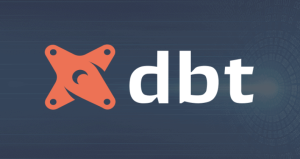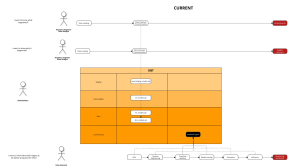Today’s pioneering organizations — not only companies with highly technical products — are taking the initiative to develop their own applications with embedded analytics. In the process, they’re improving the customer experience, reducing costs, and driving revenue growth.
“The newest, fastest-growing and most interesting embedding activity I’m seeing is among end-user organizations in dozens of industries that don’t necessarily identify as independent software vendors or software as a service (SaaS) providers,” says Doug Henschen, principal analyst at Constellation Research. “They’re venturing into providing software or services for the first time, and they’re embedding analytical capabilities to make insights more accessible applications more compelling and data driven.”

In some cases these new, analytically enriched offerings are simple, internal-facing applications aimed at ordinary business users, whether they are employees or partners, says Henschen. “I’m also seeing lots of breakthrough, customer-facing applications and services that are adding value, making the relationship stickier and driving new sources of revenue,” Henschen adds.
By embedding analytics, you add reporting and analytical capabilities to your own software and Software-as-a-Service (SaaS) offerings. In this day and age when agility and flexibility are essential to stay competitive, embedded analytics provides you with an opportunity for market leadership and can set your organization apart as an innovator.
And today’s embedded analytics is not just for data analysts: it is explicitly designed to help your business users leverage data-driven insights to make better decisions. Less time is spent on data preparation and more time goes into analysis which can be put to practical use.
In this blog, we’ll dig into the many use cases for embedding analytics, including:
- Creating new revenue opportunities
- Achieving Rapid Time to Value and reduce costs
- Leveraging capabilities of emerging technology
Create new revenue opportunities
The most valuable aspect and use case of embedded analytics is its ability to help you design new business models that monetize the data that you already have, creating new revenue streams. What data do you collect that could be valuable for your customers? For example, if you offer a website building application, it’s likely you have data that can help your customers identify peak traffic times — and therefore help them understand the best day and time to publish a new piece of content.
You can also enhance your analysis with third-party data to gain additional insights into customer behaviors and preferences. It may lead you to opportunities you hadn’t thought of. Credit card companies, for example, are aggregating and anonymizing consumer spending data and benchmarking it. A restaurant can use this data to see how credit card expenditure at their location compares to other restaurants in their region, or restaurants that serve the same type of cuisine, such as Mexican food. They can then make informed changes to their pricing, menu, or hours to attract a demographic they may have initially overlooked.
Achieve rapid time to value and reduce costs
Another use case for embedded analytics is driving efficiency. With many embedded analytics tools available, there’s no need to build analytical applications from scratch. You can take advantage of the tools and data you already have and get more value out of them by automating wherever possible — from data ingestion to insight delivery. Eliminating unnecessary human intervention is one way to accelerate time to value.
Embedded analytics also reduces costs and places analytics where they drive better business outcomes. Conventional reports and dashboards leave gaps between insight and action. Additionally, constantly switching between dashboards and transactional/productivity applications slows down the workflow. Embedded analytics not only saves time, it also ensures that carefully curated analytics based on known, reliable data sources are presented where they are needed — within the applications where decisions are made and actions are taken.
Emerging embedded analytics technology
Before you embark on your embedded analytics journey, it’s important to understand the five categories of this technology, based on the level of sophistication presented. All levels can bring enormous value — but it’s up to you to determine which is most appropriate for your organization.
- Level 1 — Web embedding: This is embedded analytics at its most basic. It’s highly effective, widely used, and relevant. It uses iFrames and HTML or JavaScript to embed code into applications in order to publish reports, data visualizations, or dashboards to websites. In this implementation, there’s usually little or no interaction between the web-based application or interface and the analytics that you’re embedding.
- Level 2 — Secure custom portals: In this category, analytics, reports, and dashboards are aggregated and published to internal, customer, or partner-facing portals that consolidate access to reports or dashboards. These portals include security features, controls, scheduling, personalization, and custom styling and branding.
- Level 3 — SaaS/COTS embedding: At this level, the key difference is that the integrations have two-way interactivity and support authentication and row-level data access controls. Commercial off-the-shelf software (COTS), such as SAP or Salesforce, is integrated with BI solutions through pre-built integrations. It’s a great choice, but you want to make sure you avoid the “swivel chair integration,” where users have to navigate separate analytical interfaces to perform analysis.
- Level 4 — Real-time interactive: This is also known as context analytics. In this case, we put the analytics not just in a pre-built place, but in specific areas or functions within Salesforce, SAP, or some other bespoke application. Context analytics requires rich software development kits (SDKs) for not only interactive but also predictive capabilities. It has a lot of benefits: cloud-friendliness; greater flexibility and agility; and the ability to make discrete changes, upgrades, and customizations. This level of embedded analytics eliminates swivel chair integration, with its toggling between transactional and analytical environments.
- Level 5 — Action-oriented embedded analytics apps: At the highest level of sophistication, embedded analytics have low-code or no-code development capabilities. The key differentiator here is that embedded analytics support event triggers, workflows, and automation. And alerts, thresholds, or models, in turn, trigger action. This can support scenarios where there is no time for analysis. It’s a cognitive system that learns and adapts over time and fits the definition of an intelligent data application. This is a hot area of interest in automation these days.
The role of predictive analytics and artificial intelligence
As a baseline, it’s expected that analytics provide descriptive and diagnostic capabilities. In other words: what happened in the past, and why. What’s next is delivering predictive capabilities: what will happen based on real-time data. That includes trending, forecasting, and prediction.
This essentially provides the ability to predict desirable or undesirable outcomes within context. For example, you could determine:
- Which transactions are risky and which are a safe bet.
- Which assets will soon need to be serviced and which will not.
- Which customers and employees will leave your organization and which will not.
Next-generation machine learning (ML) can create closed-loop environments that learn from the outcomes of business actions taken within an application and then prescribe recommendations, which are delivered at key decision points. If the confidence level is high for these predictions, automation can be applied so that the action triggers automatically — without a human required for the decision. When business conditions change radically, as they have during the pandemic, you can determine which decisions worked well and which ones did not. By bringing the data from the business outcome back into the BI and analytics environment or the data science environment, you create an intelligent system that adapts over time.
We see this level of sophistication used in Uber and Lyft ride-sharing apps, for example. Transportation has evolved into a digitally connected experience. Riders connect with drivers through a digital platform and app. Predictive analytics tell the rider when to expect the vehicle, how long the ride will take, and how much it will cost. And real-time data feeds models that keep the driver and rider up to date on estimated times of arrival. When traffic conditions change, artificial intelligence automatically prescribes a new route and updates everybody on the new time of arrival. Over the next three to five years, we expect to see more learning, recommendations, and analytics-triggered automation capabilities like these.
Gaining stakeholder and executive buy-in
In order for embedded analytics to gain a foothold in your organization, it’s critical to rally support. It’s an important step toward creating a truly data-driven culture. Here are some helpful pointers:
- Identify areas where you can improve business outcomes or processes, such as increasing productivity. Instead of shooting for the moon, start with small wins first and build on those.
- If you have large populations of users who are making decisions without analytic insight, educate them on the benefits of embedded analytics. Consider creating a cross-functional team to brainstorm on potential projects, always focusing on business benefits. Publicize this effort to draw more interest. The most successful data-driven organizations have a chief data officer or chief analytics officer and a “center of excellence.” Include not just the data experts (BI and analytics people, data engineers, and developers) but also business unit leaders and executives. It’s critical to get their buy-in. One of the keys to selling internally is focusing on the pain points. If dashboards and reports are serving people well, keep going with that.
- Automate where you can — during data capture, loading, processing, and when schedules and alerts are set.
- Determine areas where delivering a concise analytic to someone making a decision would be of value.
- When looking at the higher level, more sophisticated embedded analytics, consider how dynamic the situation is. You don’t want to go through a lot of effort to create embedded analytics with software development kits (SDKs) and/or APIs if the environment is in constant flux and you have to continually make adjustments. Always start with a prioritized list of the things that are in the biggest demand and will have the biggest payoff first.
Embedded analytics checklist
If you’re thinking about getting into embedded analytics, here are key features to look for in a platform:
- Microservices architecture — with the ability to tap into fine-grained APIs, pull out concise bits of analytics, and deliver them within user interfaces, processes, or workflows.
- Rich integration capabilities.
- Comprehensive security and access controls.
- Two-way interactions between applications and your BI platform.
- Integration with customary security conventions like LDAP.
- Ability to exploit events, automate alerts, and employ low-code/no-code implementations, especially where in-house developer resources are scarce.
- Capabilities to support cloud development, specifically multi-cloud.
- Augmented features such as the use of automation, ML, and natural language interfaces that allow more users to interact with the analytics.
Embedded analytics deployments
According to Henschen, “Transformational, data-driven applications are only being built by innovators and fast followers — the leading 20% to 25% of organizations that are trying to differentiate and transform their organizations. Embedded analytics are often the centerpiece of such applications and services.”
To give you an idea of the positive business outcomes that can result from embedded analytics, here are some recent successes.
Major European grocery store chain with over 1,000 locations
- Goal: Share insights with its store managers. Instead of building store-level dashboards, they decided to build a single, centralized dashboard that provided a view across the organization and embedded concise store-specific insights for each and every store manager.
- Implementation: Used a Level 1 BI and embedded analytics solution to track shrinkage, human resources efficiency, product assortments, benchmarks, and performance at the individual store level.
- Result: Reduced the time managers spent on reporting by 50%, while bringing consistent store-level insights to local and central managers. Stock management, promotions, and sales efficiency improved, and the grocery chain decided to go further and create embedded dashboards for purchasing.
Regional insurance company
- Goal: Accelerate decision-making within custom underwriting and claims applications, and eliminate the need for people to navigate between interfaces.
- Implementation: Used granular APIs to embed the relevant analytic insights at the decision points.
- Result: Internal users can get concise and to-the-point answers more quickly to key questions, such as “Do we investigate this claim?” or “Do we underwrite this policy?”
Network equipment manufacturer
- Goal: Improve support for telecommunications customers.
- Implementation: Created a predictive maintenance application, where customers can monitor their equipment remotely, drawing on log data from equipment out in the field in order to understand calling trends and projected service levels. The application also helps them proactively plan equipment repairs and upgrades.
- Result: Greater customer satisfaction, increased customer retention, and more sales of the manufacturer’s intelligent equipment — all enhanced by the value-added analytical service.
A national property management company
- Goal: Finding a more reliable way to monitor the heating and air conditioning equipment, backup generators, alarm systems, and more.
- Implementation: Developed a predictive maintenance capability making use of large data sets from the equipment.
- Result: Reduced maintenance costs for property owners and prevention of unplanned outages, which have improved customer satisfaction for property owners and tenants.
Actuarial consulting company
- Goal: Build their own risk platform as a service to insurance companies.
- Implementation: Embedded financial reporting and risk-modeling capabilities into their cloud-based risk platform, which supports multitenant delivery of customer-branded interactive dashboards and reports, automates cash flow and actuarial modeling workflows, and meets core predictive requirements.
- Result: Frees skilled insurance company actuaries from routine reporting and data modeling and provides a highly lucrative, consistent flow of revenue and profit for a previously project-oriented firm.
Henschen summed it up this way: “Digital leaders and fast followers recognize that data-driven insights, delivered in the context of decisions and transactions, can vastly improve the user experience. The approach can also be used to speed decision-making, monetize potentially valuable data, and unleash new business models.”
For a more personal touch, we can help you explore what an embedded analytics deployment would look like for your specific organization. You can get started here.
Source: Looker.com
- What the heck is data analytics? Explain it like I’m five. - June 8, 2022
- Best Practices for Managing Data Access to BigQuery - October 11, 2021
- How PE firms can turn data science into a competitive advantage - October 11, 2021



